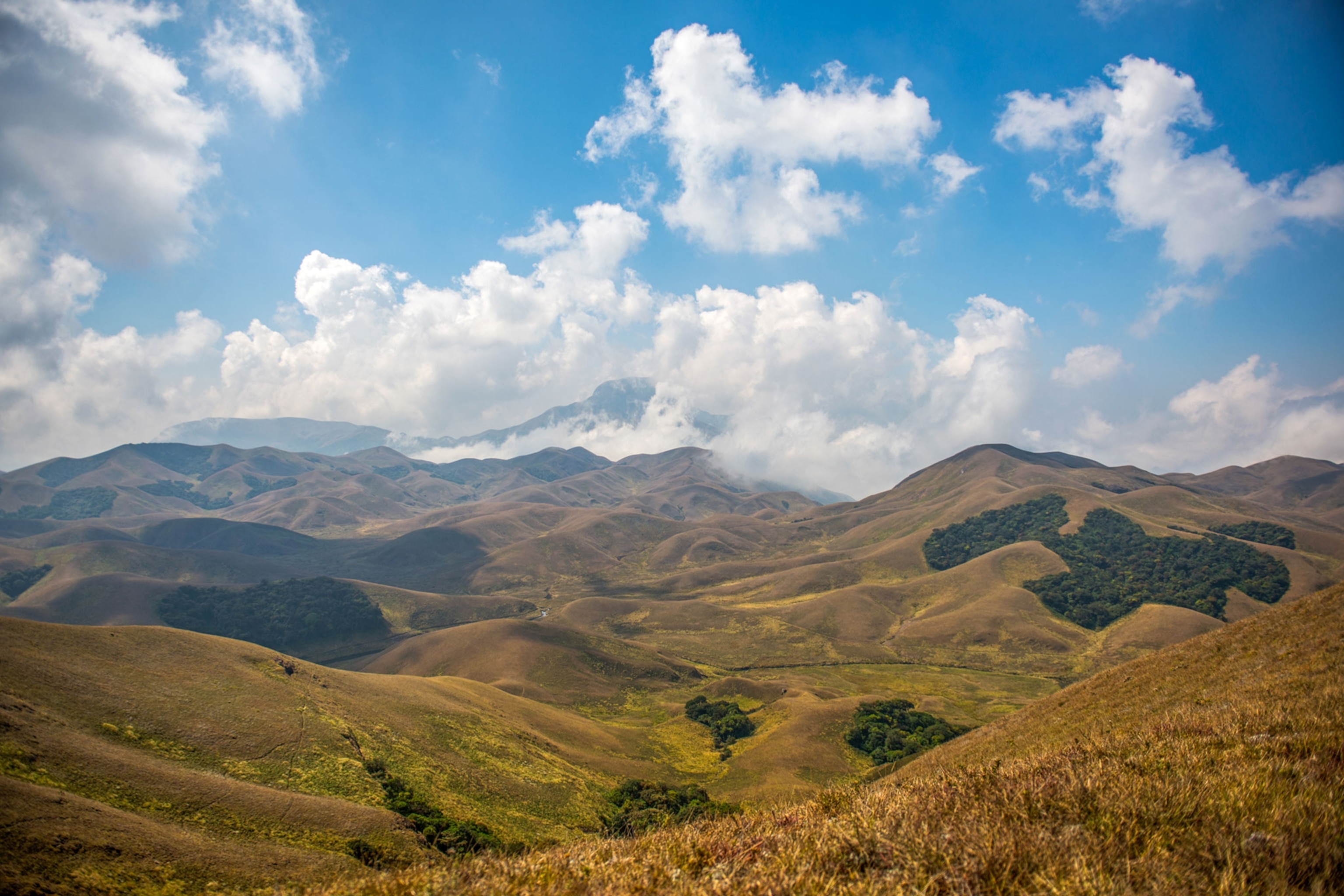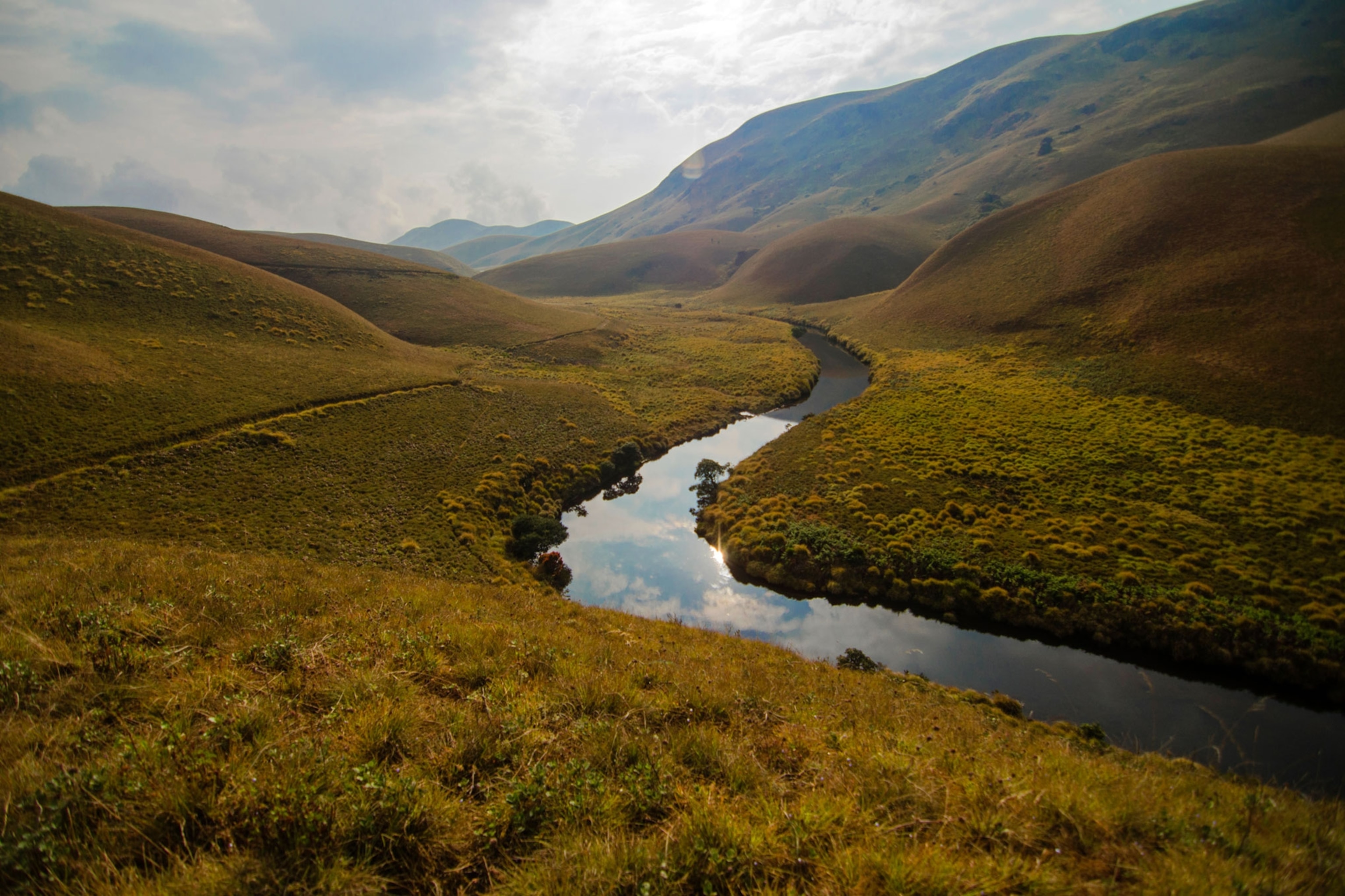
Breathtaking ‘Sky Islands’ Showcase Evolution in Action
In western India, ‘islands’ in the sky are one of the world’s biodiversity hotspots.
Islands are not only in the ocean.
The basic premise of an island, an isolated bit of land surrounded on all sides by an inhospitable substrate, occurs not only in the ocean—but in the sky too. "Sky islands" are the tops of tall mountains that become environmentally isolated from each other even if they are close together, geographically speaking.
The Western Ghats are a mountain chain in southwest India home to spectacular and unique sky islands. But despite being a hotspot of high biodiversity, relatively little is known about them scientifically.
This mystery has inspired India-based Prasenjeet Yadav, a science photographer and National Geographic explorer, to document the unique biodiversity and highlight the conservation issues through photography.



















The peaks of the Western Ghats, ranging between 3,000 and 8,500 feet above sea level, host an almost unbelievable array of microclimates, looking like “patches of forests floating in a sea of grasslands,” says Yadav. The diversity of environments leads to a vast number of endemic species that live nowhere else in the world.
Treasure Islands
“It’s not just elevation that makes these sky islands, it’s the environment,” says Yadav, noting there is no “official” designation of altitude that makes a mountaintop able to be called a sky island. (See a meowing night frog from the Western Ghats.)
“As soon as you come out of the cold, wet montane environment, only 100 meters down, it is completely dry.”
One of the specific habitats unique to the sky islands of this area is a type of low-temperature, high-humidity tropical cloud forest full of stunted trees mixed with grasslands called the Shola.
From tiny frogs to brightly colored snakes to delicate birds, these sky islands are teeming with life. Still, since the areas are underexplored, researchers are finding some hidden surprises when they look closely at specific species of animals—especially birds. (Read about a tree-climbing crab in the Western Ghats.)
It was previously thought the populations of the Western Ghats shortwing, which are restricted to Shola environments, were all one species, separated between mountaintops. Upon a visual inspection of plumage, though, it becomes clear something is different than expected.



It is not just feather color that differs, with some clearly bluer and others more orange, but each mountaintop population has a different song style and genetic fingerprint. Speciation is happening through separation not just on oceanic islands, but these sky islands, too.
This research led by V.V. Robin at the Indian Institute of Science Education and Research showed that what was previously thought to be one species of shortwing is really three, each unique to its own mountaintop.
A parallel finding was discovered with birds called laughingthrushes—and it is likely other singular species of mammals, birds, and reptiles in the region will be divided into many more.
"New species continue to be discovered in these mountains, with over a dozen frog species, about three plant species and two new bird genera, and one bird species described just in 2017," says Robin. (Read about seven new M&M-sized frog species found in the Western Ghats.)
Preserve and Protect
The legacy of this separation between populations of one species that over time became multiple is due to a glaciation event around four million years ago. Aridity caused by glaciation drove species, including shortwings and laughingthrushes, higher up the mountains for suitable habitat.
"Understanding the evolutionary past of these sky islands also helps us to better prioritize areas that we should conserve for the future," says Uma Ramakrishnan, a molecular ecologist at the National Centre for Biological Sciences in Bangalore who was involved in the bird speciation research.
When the glaciers receded and the climate changed, the animals and plants all stayed confined to their preferred locations—confined to separate sky islands. Examining the differences in the color, shape, and genetics of these populations now shows these millions of years apart transformed them into new species. “You can see evolution in action,” says Yadav. (Read about the world's irreplaceable places, including the Western Ghats.)
Like many places on Earth, human encroachment on this biodiversity hotspot is greatly reducing the extent of these unique habitats. At least 50 percent of Shola habitat has already been lost in the Western Ghats. People are planting crops in this region, such as tea, to keep up with increasing demand.
Yadav is passionate about preserving the environment of the Western Ghats and sky islands. Looking at the nighttime photo of shining city lights in the valleys between the peaks, he notes that these rare species are in danger from both humans and climate change.
“These islands are also floating in the sea of urbanization.”
You May Also Like
Go Further
Animals
- This ‘saber-toothed’ salmon wasn’t quite what we thoughtThis ‘saber-toothed’ salmon wasn’t quite what we thought
- Why this rhino-zebra friendship makes perfect senseWhy this rhino-zebra friendship makes perfect sense
- When did bioluminescence evolve? It’s older than we thought.When did bioluminescence evolve? It’s older than we thought.
- Soy, skim … spider. Are any of these technically milk?Soy, skim … spider. Are any of these technically milk?
- This pristine piece of the Amazon shows nature’s resilienceThis pristine piece of the Amazon shows nature’s resilience
Environment
- This pristine piece of the Amazon shows nature’s resilienceThis pristine piece of the Amazon shows nature’s resilience
- Listen to 30 years of climate change transformed into haunting musicListen to 30 years of climate change transformed into haunting music
- This ancient society tried to stop El Niño—with child sacrificeThis ancient society tried to stop El Niño—with child sacrifice
- U.S. plans to clean its drinking water. What does that mean?U.S. plans to clean its drinking water. What does that mean?
History & Culture
- Séances at the White House? Why these first ladies turned to the occultSéances at the White House? Why these first ladies turned to the occult
- Gambling is everywhere now. When is that a problem?Gambling is everywhere now. When is that a problem?
- Beauty is pain—at least it was in 17th-century SpainBeauty is pain—at least it was in 17th-century Spain
- The real spies who inspired ‘The Ministry of Ungentlemanly Warfare’The real spies who inspired ‘The Ministry of Ungentlemanly Warfare’
- Heard of Zoroastrianism? The religion still has fervent followersHeard of Zoroastrianism? The religion still has fervent followers
Science
- Here's how astronomers found one of the rarest phenomenons in spaceHere's how astronomers found one of the rarest phenomenons in space
- Not an extrovert or introvert? There’s a word for that.Not an extrovert or introvert? There’s a word for that.
- NASA has a plan to clean up space junk—but is going green enough?NASA has a plan to clean up space junk—but is going green enough?
- Soy, skim … spider. Are any of these technically milk?Soy, skim … spider. Are any of these technically milk?
- Can aspirin help protect against colorectal cancers?Can aspirin help protect against colorectal cancers?
Travel
- What it's like to hike the Camino del Mayab in MexicoWhat it's like to hike the Camino del Mayab in Mexico
- Is this small English town Yorkshire's culinary capital?Is this small English town Yorkshire's culinary capital?
- This chef is taking Indian cuisine in a bold new directionThis chef is taking Indian cuisine in a bold new direction
- Follow in the footsteps of Robin Hood in Sherwood ForestFollow in the footsteps of Robin Hood in Sherwood Forest




